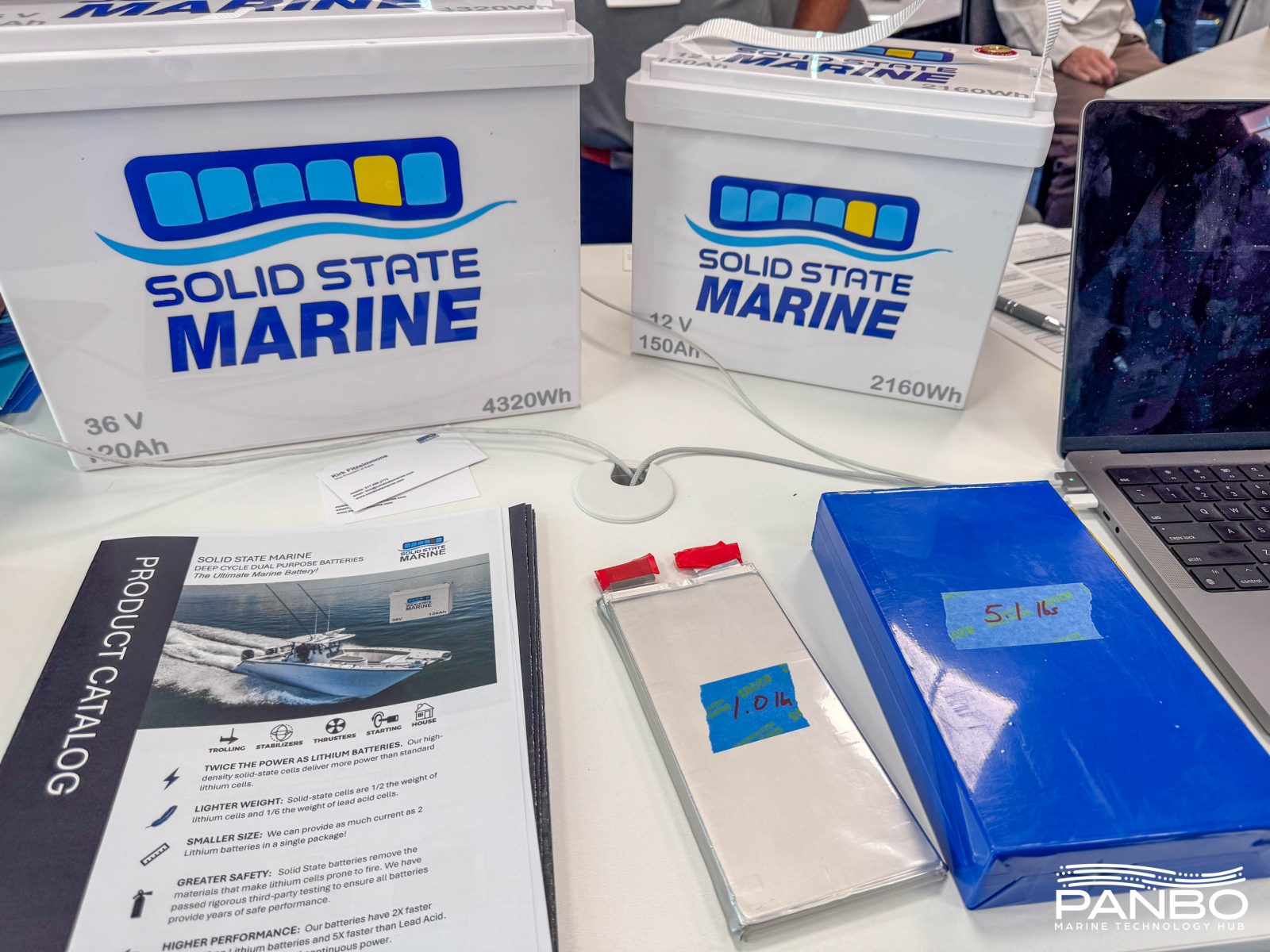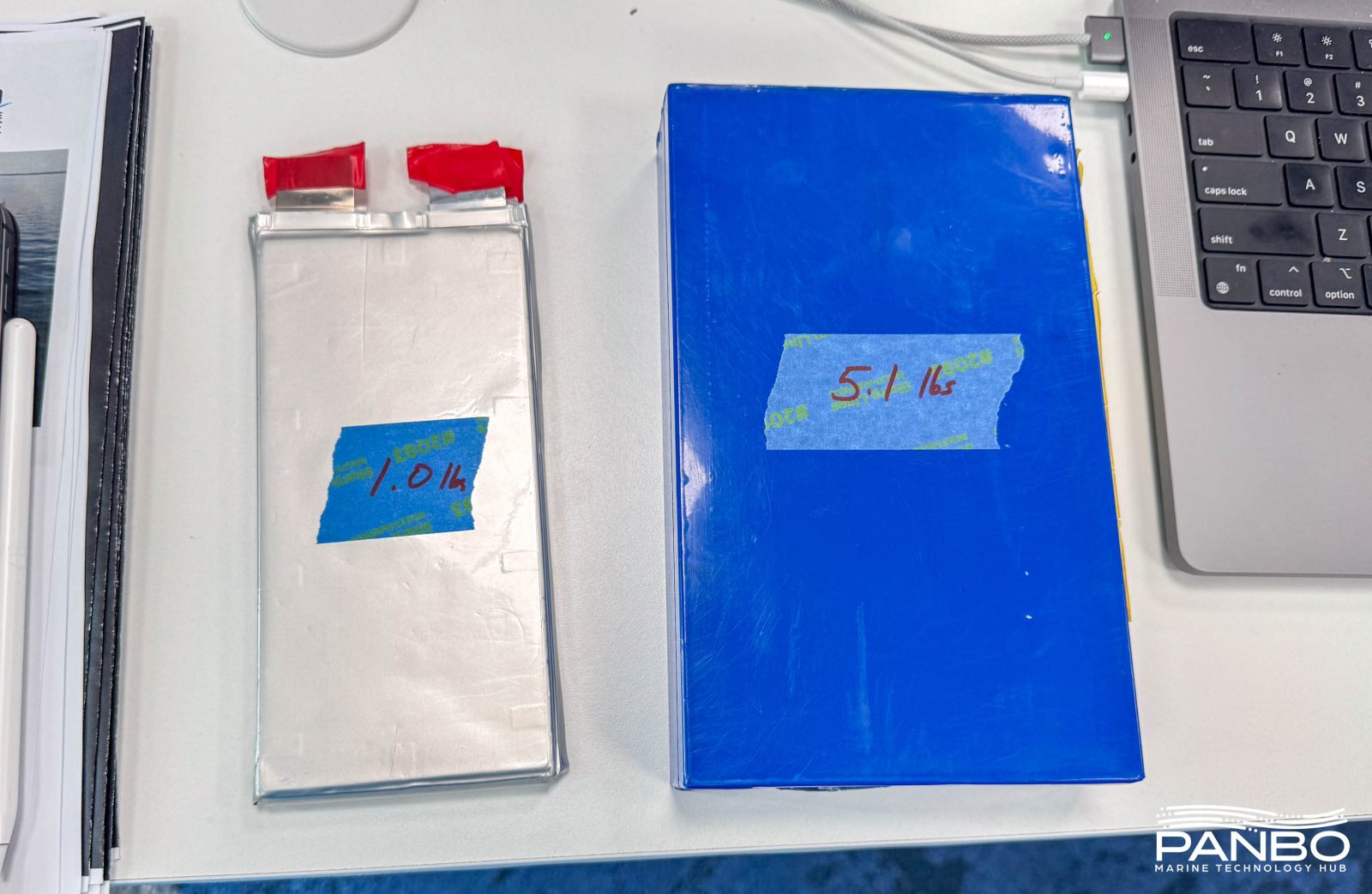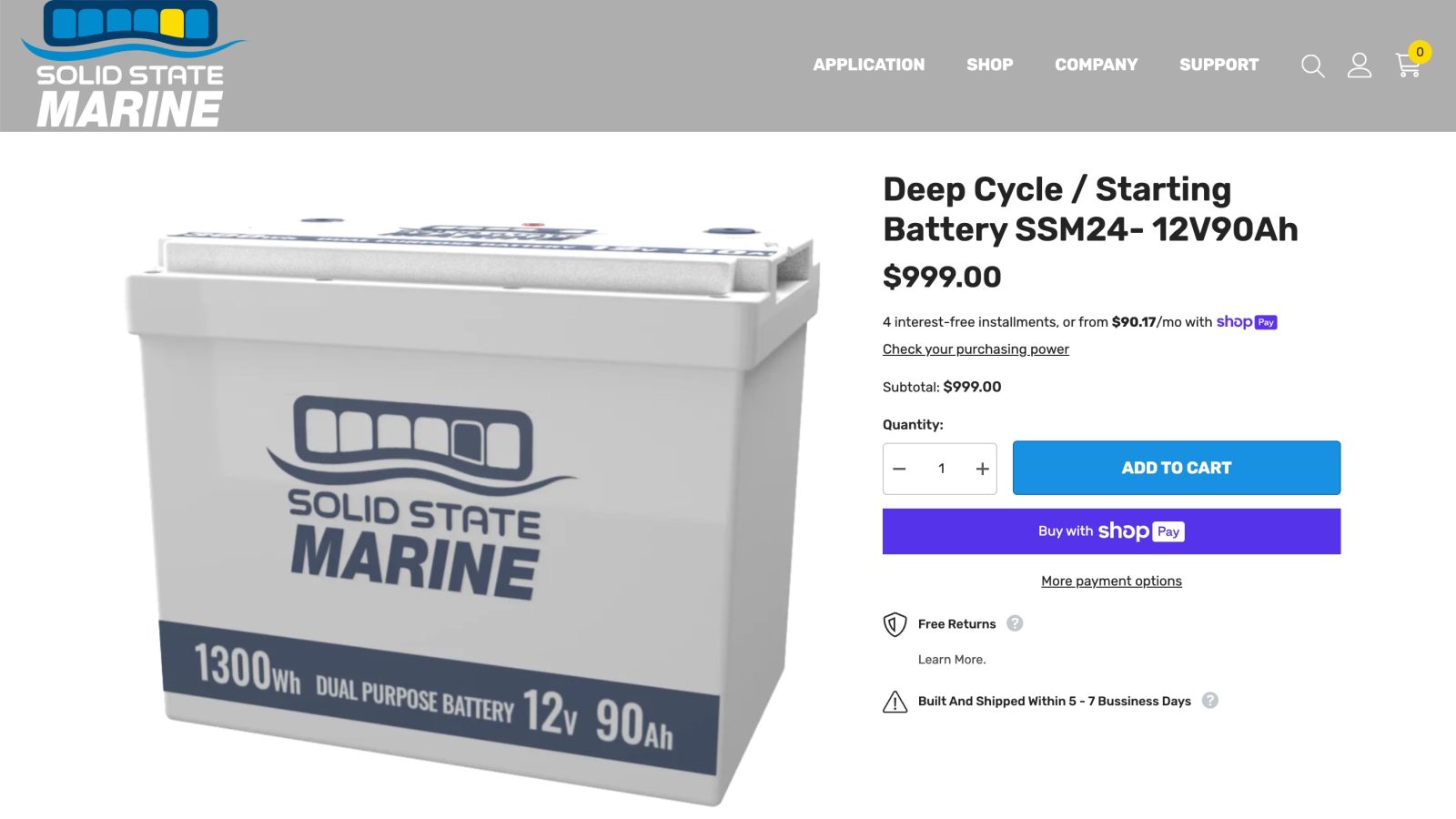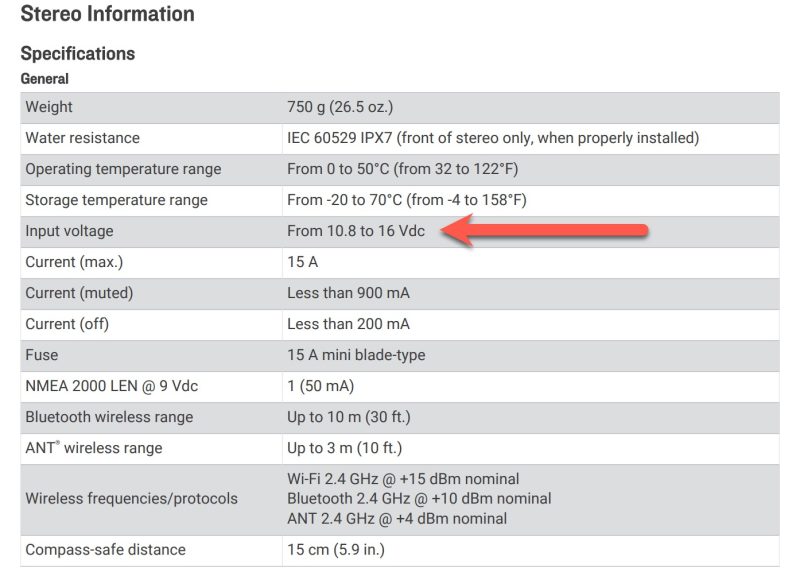IBEX 2024: Solid State Marine’s solid state lithium batteries

In a first for IBEX, this year’s show featured a startup pavilion for early-stage companies to display at the show in a cost effective manner. I spent some time checking out the exhibitors in the pavilion and was very pleased to come across Solid State Marine’s booth. It is exciting to see solid state lithium batteries packaged and ready to be sold to the boating public. Solid State Marine is, to my knowledge, the first company offering solid state lithium batteries to the marine electrical market.
You may be wondering what makes a battery solid state. After all, typically when we talk about solid-state in technology we mean a device with no moving parts and nearly all batteries qualify based on that definition. In batteries, solid-state is a reference to the electrolyte, not indicating no moving parts. Quite literally, the electrolyte is in a solid state, not liquid or gel as is the case for other lithium (and most lead acid) chemistries.

A recent Getting Technical column I wrote for Trade Only focused on emerging battery technologies and discussed solid state batteries in greater depth. The promise of solid-state cells and batteries is higher power density, reduced or no flammability, better performance in extreme temperatures, and potentially longer lifespans. The two cells shown above each feature the same energy capacity but as you can see, the solid state cell on the left weights one pound while the LiFePO4 cell on the right weights just over five pounds. For further comparison, a 300 amp hour Solid State Marine battery weights 40 pounds while the Epoch Dual Purpose 300 ah, 12-volt battery weighs 82.

Solid State Marine (SSM) offers batteries in 12, 24, 36, and 48 volt nominal voltages. In 12-volt they offer 90, 210, 300, and 750 amp hour batteries. The 90 amp hour battery sells for $1,000 while the 750 amp hour battery is just shy of $6,000. Impressively, that 750 amp hour battery weighs just 100 pounds. Compared to LiFePO4 batteries, there is a price premium. However, the premium isn’t huge, especially in light of the maturity of the technology.

Even the smallest capacity 12-volt battery can both start engines with a 650 cold cranking amp (CCA) rating. All three larger batteries are rated for 1,500 CCA. Additionally, the 90 amp hour battery sustains continuous discharge loads of up to 150 amps and peak currents of up to 300 amps. Again, the three larger batteries all sustain 250 amps continuously and 500 amp peak discharge.
Solid-state is quite new technology and comes with several unknowns as well as some implementation challenges. One of the biggest challenges, especially at 12-volts, is the higher voltage of solid-state as compared to LiFePO4. LiFePO4 cells have a nominal voltage of roughly 3.2 volts and rest when fully charged at about 3.4 volts per cell. That means a fully charged 4-cell, LiFePO4 battery rests at about 13.6 volts. Additionally, the maximum charging voltage recommended for nearly all LiFePO4 batteries is 14.6 volts. That voltage range works well with equipment designed for 12-volt nominal electrical systems.

Solid state cells typically have higher nominal and resting voltages, though they can vary depending on the exact implementation of the technology. For example, Solid State Marine’s cells appear to be nominal 3.6 volts. Further, they call for charging at 4.2 volts per cell. That means a 4-cell battery will have a nominal voltage of 14.4 and charges at 16.8 volts. That is high enough to cause concern about components designed for 12-volt nominal power systems. The first thing I checked was the power rating of Fusion Apollo RA-770 stereo head unit. A quick check of the manual shows a 16 volt maximum rating. I imagine you may be able to address this by reducing peak charging votlage, but there are questions to be answered about the impact on the battery of not being charged to recommended voltage.
Fortunately, the high voltage problem really only exists for 12-volt nominal replacements. At 24, 36, and 48 volts, SSM controls the voltage by removing one or more cells. For example, the 24 volt replacements have a charge voltage rating of 29.4 volts. I find it easiest to compare those voltages by comparing to what they’d be at 12-volt nominal. In this case, that would 14.7 volts and a perfectly safe peak voltage.
I am hopeful I will be getting a test battery soon and begin to put this exciting new technology through its paces. I’m also looking forward to a little bit of destructive testing. You may have seen a video I posted of EPT stabbing a solid state cell from last year’s METSTRADE. I’m hoping to be able to further explore the safety of this technology. If it is able to deliver the increased power density, wider temperature, greater cycle life, and better safety, I’m excited. So, watch this space and let’s see what develops.













Starting an e-propulsion install shortly that will use the SSM 48v batteries kitted to 96v nominal. The power density is what drove the decision to use them, along with endorsement by the drive manufacturer. Will be an interesting winter project.
That should be a very interesting project. I hope you will share the results as you gather them.
-Ben S.
Is there an internal BMS or any battery to battery communication for balancing?
The problem with Solid State battery cells is not necessarily the technology, but that the only company who currently makes them is in the process of being thrown off the Nasdaq – Elecjet Powercells is owned by Alpine4 holdings, who has lost 97% of its share price in the past month. Not good if you need to guarantee supply.
Hi Ben! It certainly looks like the long-awaited lithium replacement for the LA start battery. The starter certainly doesn’t care about 16+V under charge, and charging would be easily supplied by a DC-DC charger (as we have now). allowing charge down to -4 F is nice, too!
I looked at a couple of my 12V equipment manuals, and 16.8V is definitely outside the range (almost everything is 13.8V nominal, +/- 15%) though NMEA2K is “16V”. I guess you could put a couple 100a diodes in series in the load buss, but that seems wasteful. Better would be to require a DC-DC converter for the electronics that are sensitive to voltage (fortunately, our MFD/Radar is not).
HI Ben – interesting article. One sentence caught my attention – “…typically when we talk about solid-state in technology we mean a device with no moving parts…”
I know you weren’t around when vacuum tubes were still in use, but the term solid state originally referred to semi-conductor based designs (transistors back then), as opposed to tubes. It really had nothing to do with moving parts. As virtually everything is semi-conductor based now, the term is seldom seen. Perhaps that’s why a battery company decided to apply it to their product…..
What are the prices for the 48volt in different amps? I see the 12 volt prices but not the 48 volt prices. Is the 48 volt Bluetooth capable? Thanks so much
Grant, the most common place I see it now is with regards to relays. We often see relays described as solid state for those that aren’t using a coil and armature to make and break contact. Additionally, in my old world of IT infrastructure, solid state was the term of choice to distinguish between hard drives with spinning, magnetic platters and semi conductor based options.
-Ben S.
What 120 vac charger do I use? Will my regulated 70 amp alternator charge these. I have a Victron DC to DC charger. I am interested in the 12vdc battery. Thanks
Fritz,
You will need to make sure that whatever charger you use is compatible with Solid State’s higher nominal voltage for their 12 volt equivalent batteries. I think that will be challenging. I’d suggest contacting Solid State Marine and seeing what recommendations they have for charging.
-Ben S.
Though the SSM battery charge figures are a little higher than normal LifePO4, they (SSM) seem totally comfortable with conventional Lithium capable chargers. We are doing a setup at 96v that will be made up of 4 of their big 48v batteries, and they are recommending that we use NOCO GX Industrial series chargers. When you read into the spec of the GX4820 there is some head-scratching to be done. The charger has no “float” mode. It’s charge profile is out of the norm, but we will be using them as one of my primary concerns is not providing an avenue for any of the vendors involved (Elco and SSM) to pass the buck on responsibility. If I did not harbor that concern I would likely go the route of using a DeltaQ charger and have it programmed exactly to the SSM spec. There are not a lot of 48v chargers out there that will fit into the space limitations we have in this project. But the very short version of all this is…. SSM seems to like NOCO.
However…. if I were running a 12v SSM battery, I would most likely use either a Victron or Mastervolt charger programmed exactly to the SSM spec. Just not an option for me for the current job.